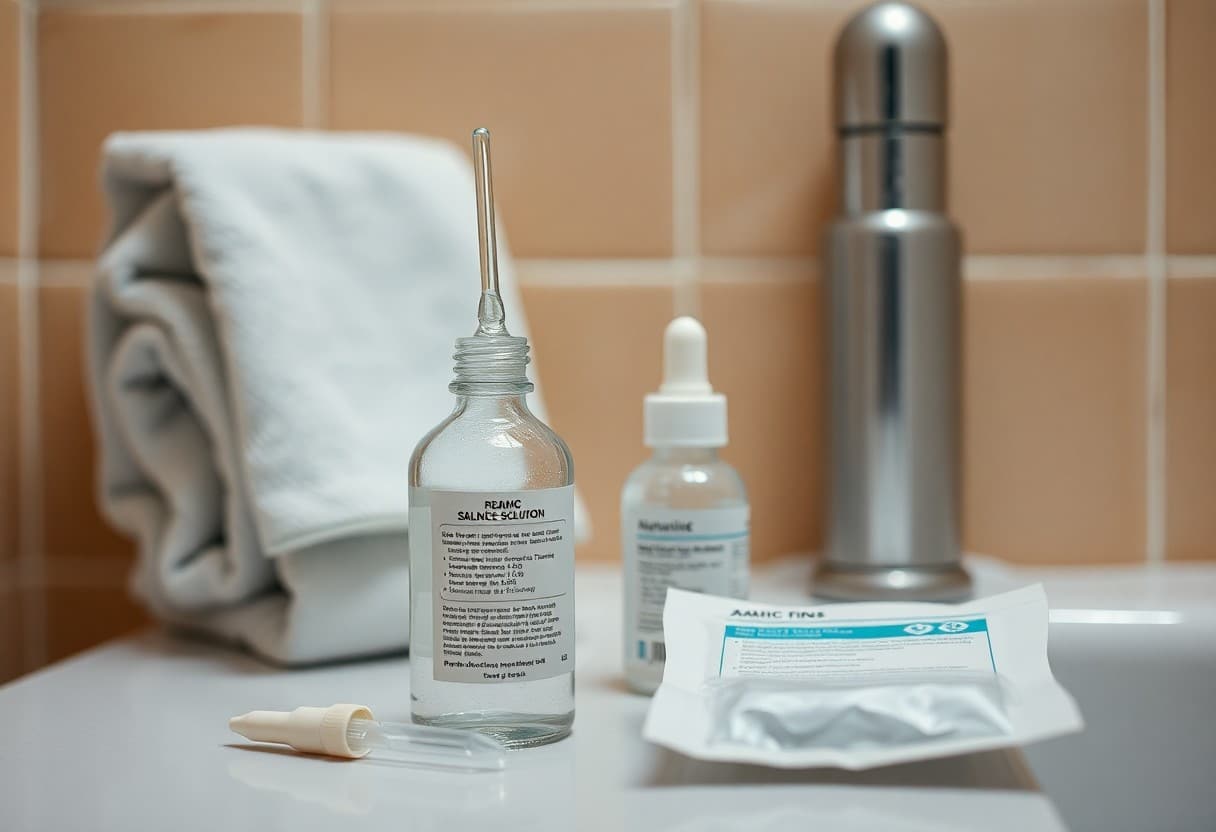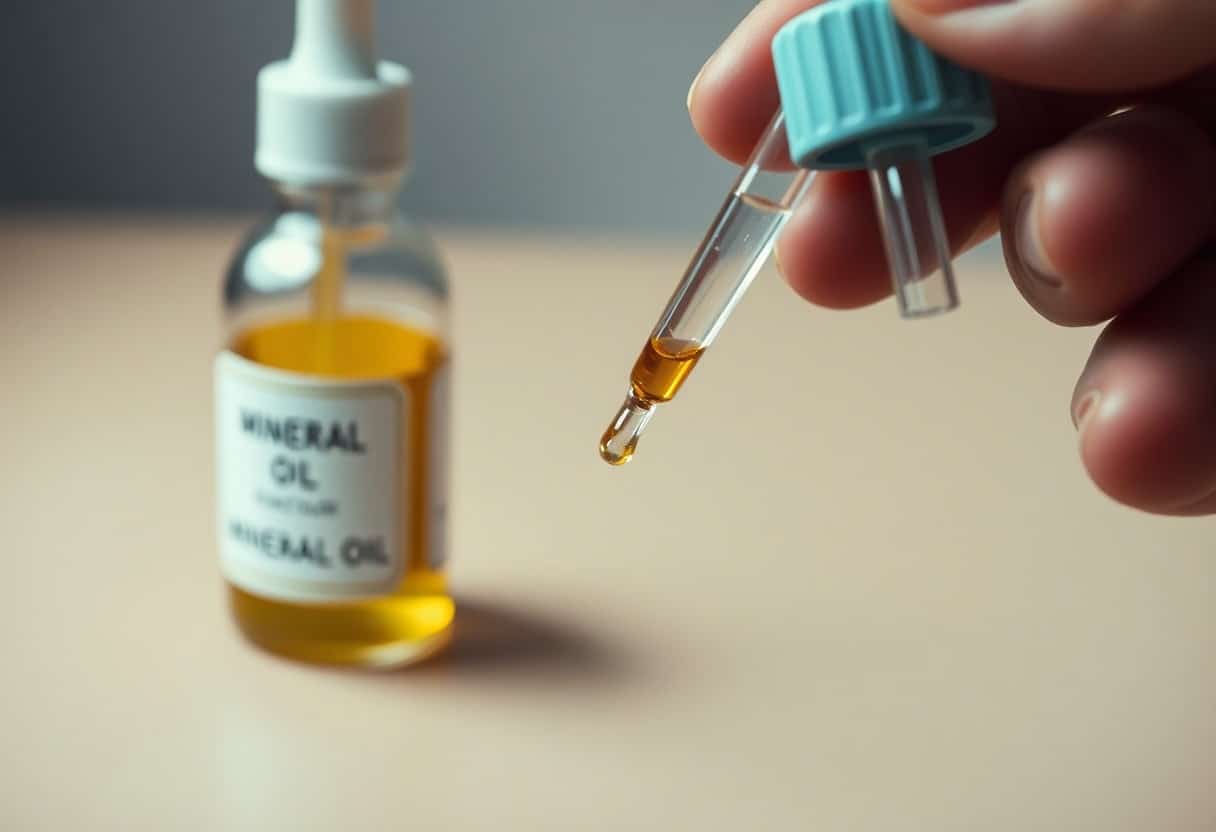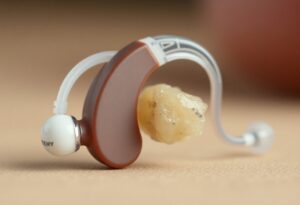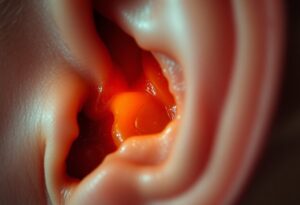There’s a safe and effective way to manage earwax build-up using mineral oil or saline solutions. These methods can help soften earwax, making it easier for you to remove it or facilitating natural drainage. In this guide, you’ll learn how to apply these substances correctly, ensuring comfort and effectiveness in maintaining your ear health. Following the recommended procedures will help you achieve optimal results with minimal hassle.
Key Takeaways:
- Mineral oil and saline can safely soften earwax to facilitate removal.
- Apply a few drops of the chosen solution in the ear canal, allowing it to sit for several minutes.
- Consult a healthcare professional if symptoms persist or if there’s pain or discomfort.
The Unseen Impact of Earwax Buildup on Ear Health
Common Problems Caused by Excess Earwax
Excess earwax can lead to various issues such as hearing loss, ear infections, and discomfort. Blocked ears may cause muffled hearing or a feeling of fullness, making it difficult to hear conversations or enjoy music. In more severe cases, the wax can trap bacteria, increasing the risk of infections, which may require medical intervention to resolve.
The Role of Earwax in Ear Defense Mechanisms
Earwax, or cerumen, plays a vital role in protecting your ears from dirt, debris, and pathogens. Its sticky nature traps particles that could otherwise damage delicate ear structures, while its acidic pH discourages bacterial growth. Additionally, earwax prevents moisture build-up, which can lead to infections, thus making it an important component of your ear’s defense system.
Beyond mere protection, earwax contributes to the overall health of your ears. The natural lubrication it provides ensures the skin within the ear canal remains healthy and avoids dryness or irritation. The process of earwax migration to the outer ear also helps in self-cleansing, continuously pushing out dirt and dead skin cells. Regular ear maintenance is important to balance this natural process while preventing excessive accumulation that could impede your ear health.
Mineral Oil vs. Saline: The Science of Softening Earwax
Understanding Mineral Oil: Properties and Effectiveness
Mineral oil is a clear, odorless liquid derived from petroleum that effectively softens earwax due to its lubricating properties. When applied to the ear, it seeps into hardened wax, allowing for easier removal. Its viscosity helps to coat the ear canal, breaking down the wax without causing irritation. Studies have shown that regular use can significantly reduce wax accumulation, making it a favored option for many seeking relief from blockage.
Examining Saline Solution: Composition and Benefits
Saline solution, a mixture of sodium chloride and water, acts as a gentle cleanser for the ear canal. Its isotonic nature means it matches the body’s natural fluids, minimizing irritation. By hydrating earwax and promoting its natural expulsion, saline helps prevent buildup and can be used as a preventative measure. Regular application can keep your ears clean and comfortable while minimizing the risk of infections associated with excessive wax.
Saline solutions come in various concentrations, commonly found in over-the-counter products specifically designed for ear use. The solution’s ability to penetrate wax and hydrate it facilitates easier removal through natural processes such as jaw movement or gravity. Many healthcare professionals recommend saline due to its non-toxic composition, making it suitable for frequent use. This gentle approach not only safeguards the delicate ear tissues but also promotes overall ear health.
Step-by-Step Guide to Using Mineral Oil for Earwax Removal
| Step | Description |
|---|---|
| 1. Gather Materials | Collect mineral oil, a dropper, cotton balls, and a towel. |
| 2. Prepare a Comfortable Setting | Find a quiet spot where you can sit or lie down comfortably. |
| 3. Warm the Oil | Place the mineral oil container in warm water to achieve body temperature. |
| 4. Apply the Oil | Using the dropper, place 3-5 drops of mineral oil into your ear. |
| 5. Let it Soak | Remain still for 5-10 minutes, allowing the oil to soften the wax. |
| 6. Remove Excess Wax | After soaking, gently wipe away any softened wax and oil with a cotton ball. |
| 7. Repeat as Necessary | Consider repeating the process daily for up to a week for optimal results. |
Essential Preparations Before Application
Before you apply mineral oil, ensure your environment is clean and comfortable. Wash your hands thoroughly to prevent introducing bacteria into your ear. Gather all the materials to avoid interruptions, and choose a time when you have enough quiet moments to allow the oil to work effectively. If you have any medical conditions or are uncertain about earwax removal, consult with a healthcare professional beforehand.
Application Techniques: Maximum Effectiveness
To maximize the effectiveness of mineral oil, position yourself with the ear to be treated facing upward. When placing the drops, aim for the ear canal without forcing the dropper deep into the ear. After applying, it helps to gently massage the area around the ear to promote distribution of the oil, aiding in the softening process.
Additionally, you can tilt your head slightly to ensure the drops permeate as deeply as possible while avoiding discomfort. Using a dropper instead of a syringe gives you better control. Patience is key; allowing the oil to sit undisturbed for the recommended time enables it to break down the wax more effectively.
Post-Care: Ensuring Ear Health After Treatment
Following your mineral oil treatment, ensure to keep your ears dry and clean. Avoid inserting objects into your ears, including cotton swabs, which can push wax deeper. Monitor for any signs of irritation or discomfort, and if symptoms persist or worsen, seek medical advice to ensure your ear health.
It’s beneficial to avoid water exposure in the ears for a day or two after treatment. If you plan on swimming or bathing, consider using earplugs. Regularly cleaning your outer ear with a washcloth during baths keeps wax from accumulating again, promoting better ear hygiene.

Administering Saline Solution for Earwax Softening
Preparing Your Solution: Dosage and Dilution Tips
Mixing saline solution for earwax softening requires careful attention to concentration. Typically, a 0.9% saline solution is optimal for this purpose. To prepare this, you can mix 1 teaspoon of salt in 2 cups of warm distilled water. Ensure the salt is fully dissolved before use for best results.
- Use distilled water to avoid impurities.
- Warm the solution slightly for comfort.
- Store any leftover solution in a clean, covered container.
- After preparation, always check the temperature before administering.
Best Practices for Application and Use
To effectively use saline solution for earwax softening, tilt your head to one side, allowing gravity to aid the process. Use a dropper to place 5-10 drops of the solution into the ear canal, then stay in this position for about 5-10 minutes. Follow this sequence twice daily for several days until the wax is softened. Keeping your ear clean and dry between applications contributes to the overall effectiveness of the treatment. Avoid using cotton swabs, which can push wax deeper into the ear canal, aggravating the situation.
Addressing Common Concerns and Myths Surrounding Earwax Treatments
Debunking Misconceptions About Ear Cleaning
Many people believe that frequent ear cleaning is vital for maintaining ear health. However, excessive cleaning can lead to irritation, inflammation, or even impacted earwax. The ear is self-cleaning, and regular exposure to environmental factors often suffices to keep it clear. In fact, introducing tools like cotton swabs can push wax deeper into the canal, risking damage to the sensitive skin inside your ears.
Evaluating the Risks and Side Effects of Oil and Saline
Using mineral oil or saline solutions can pose certain risks and side effects if not applied correctly. Common issues include irritation or allergic reactions at the application site. In rare cases, mineral oil can lead to aspiration pneumonia if it enters the lungs, especially in individuals with swallowing difficulties. It’s vital to follow recommended dosages and techniques to minimize these concerns.
Users of mineral oil or saline should also be aware of potential side effects. Skin irritations can occur if there’s an allergy or if the solution is not fully compatible with your body. Additionally, if you have a perforated eardrum, these substances may exacerbate problems by creating a pathway for bacteria and leading to infections. Always consult a healthcare professional if you have underlying ear conditions or experience unusual symptoms following treatment.

When to Seek Professional Help: Signs You Can’t Ignore
Recognizing Symptoms That Require a Doctor’s Attention
Observe your body for signs that indicate a possible earwax blockage requiring medical intervention. If you experience persistent hearing loss, pain in the ear, dizziness, or discharge resembling pus or blood, these symptoms should not be disregarded. Additionally, if home treatments with mineral oil or saline fail to provide relief after several attempts, it’s time to consult a healthcare professional for further evaluation.
The Role of Ear Professionals in Safe Earwax Removal
Ear professionals employ specialized tools and techniques to safely remove impacted earwax, ensuring your ear canal remains intact and free from injury. Using methods such as microsuction or manual extraction, they minimize the risk of complications, ensuring a thorough and effective cleaning process.
Ear professionals often utilize an otoscope to examine the ear canal, allowing them to assess the extent of the blockage and decide the most appropriate removal method. Their expertise not only alleviates discomfort associated with earwax buildup but also helps prevent issues like infections or persistent auditory problems. You can rely on their training to handle your situation safely, especially if self-treatment has been ineffective.
Navigating DIY Remedies: What to Avoid
Household Products to Steer Clear Of
Avoid using products like hydrogen peroxide, vinegar, or baking soda for earwax removal. These can irritate the sensitive skin in your ears, potentially causing inflammation or infection instead of providing relief. Commercially available ear drops specifically formulated for wax removal are safer alternatives.
Home Techniques That May Cause Harm
Many home techniques you’ve heard about can actually worsen the situation. For instance, using cotton swabs pushes earwax deeper, increasing the risk of blockages and potential damage to your eardrum. Similarly, flushing your ears with water or other fluids can inadvertently trap wax further inside, leading to discomfort and even infection.
To wrap up
The use of mineral oil or saline for softening earwax can enhance your ear hygiene routine effectively. By instilling a few drops of either solution into your ear and allowing it to sit for several minutes, you facilitate the natural dislodging of wax buildup. Ensure you follow up with gentle irrigation or seek professional assistance if necessary. Regular maintenance using these methods can help prevent hearing issues and promote overall ear health.
FAQ
Q: What is mineral oil and how does it help with earwax removal?
A: Mineral oil is a lightweight, non-irritating oil that can help soften earwax, making it easier to remove. By lubricating the ear canal, it reduces the viscosity of the wax and aids in its natural expulsion.
Q: How should I apply mineral oil in my ears?
A: Tilt your head to one side, then place a few drops of mineral oil into the ear canal. Keep your head tilted for several minutes to allow the oil to penetrate and soften the wax. You may repeat this process once or twice a day for several days.
Q: Can saline solution be used for earwax softening?
A: Yes, saline solution can be used to help soften earwax. Mixing a teaspoon of salt in a cup of warm water creates a saline solution that can be applied similarly to mineral oil, helping to break down and loosen earwax.
Q: Are there any side effects of using mineral oil or saline in the ears?
A: Generally, both mineral oil and saline are safe for softening earwax when used as directed. However, individuals with ear infections, perforated eardrums, or allergies should consult a healthcare professional before using these methods.
Q: How long does it take to see results from using mineral oil or saline?
A: You may notice improvement in softening earwax within a few hours after application. For optimal results, consistent use over a few days can help facilitate the natural removal process.



